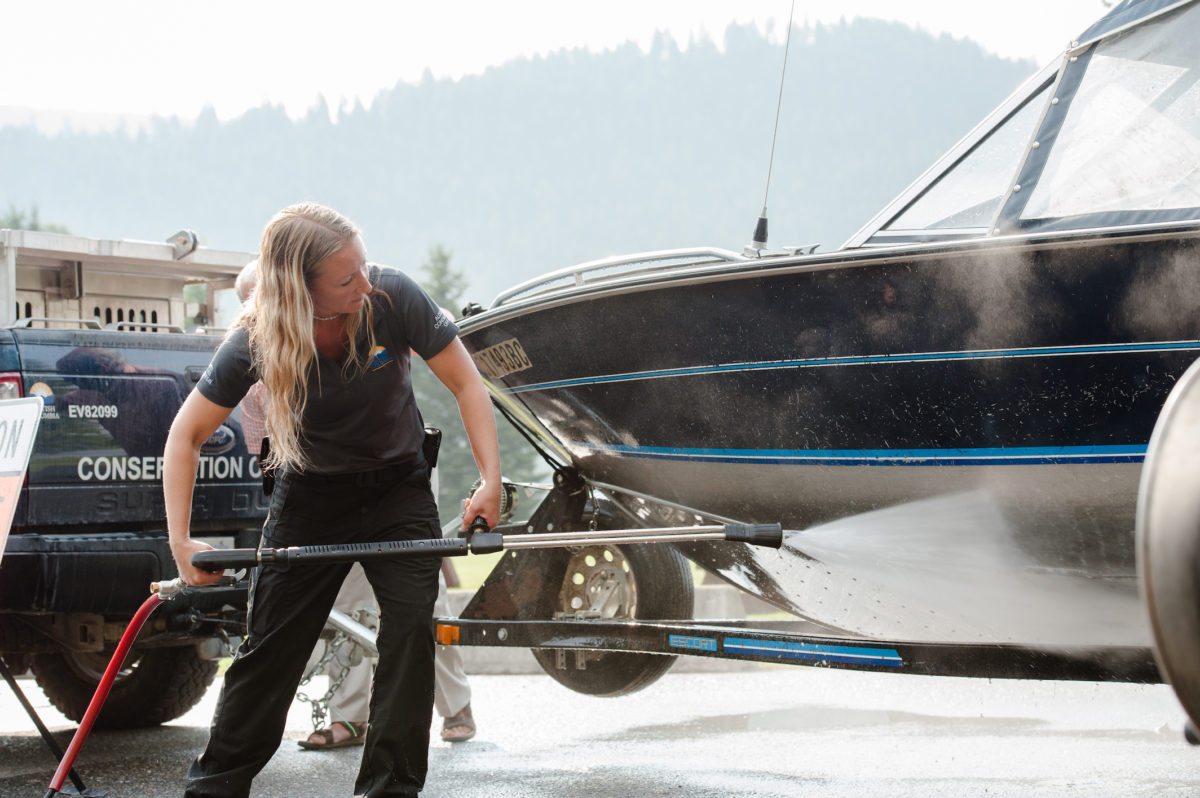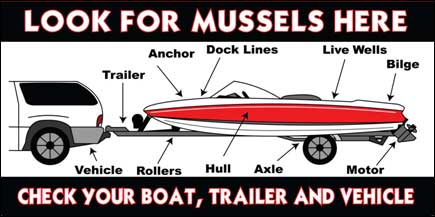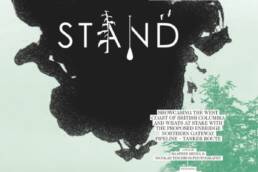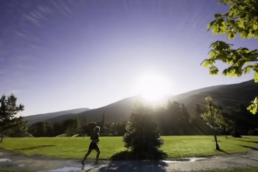This past summer, while driving around British Columbia on vacation, you likely spotted the bright orange signs set up at pull-outs on various highways that read, “Inspection Station All Watercraft Must Report.” Hopefully if you were pulling a boat or carrying a canoe, kayak or paddleboard you pulled over. Because the future of our waterways depend on it.
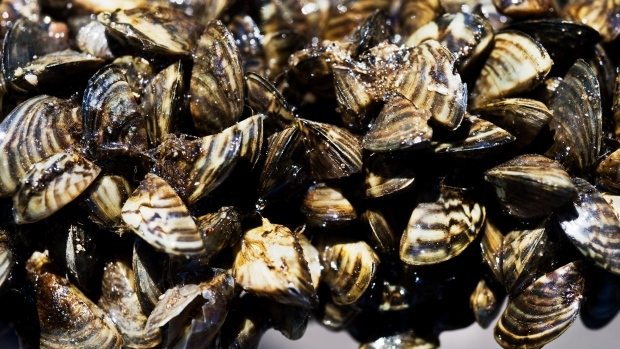 Zebra and Quagga mussels are tiny crustaceans that have infiltrated lakes and rivers in eastern areas of the continent and caused an estimated $43 million in damage per year to hydropower stations, and municipal water supplies. Not to mention the negative impacts they have on local fish populations. The reason they’re so insidious is they reproduce at a staggering rate and clog infrastructure, alter local food chains by removing plankton and cause toxic algal blooms. They’re also difficult to detect in their juvenile state, which is why a lot of boat owners don’t even know they’re carrying them. The state of Montana just announced they’ve been discovered there and British Columbia has started a campaign to keep the mussels from entering waterways here. The Inspection Stations are the front line in that fight. Early in August, the Ministry of Environment said the stations identified 1,100 watercraft as high risk, 166 decontamination orders were issued and 117 watercraft were issued quarantine periods required to meet the drying time of 30 days to ensure any mussels are dead. However, inspectors also reported that nearly one in five drivers with watercraft are failing to stop at inspection stations, even though it’s mandatory.
Zebra and Quagga mussels are tiny crustaceans that have infiltrated lakes and rivers in eastern areas of the continent and caused an estimated $43 million in damage per year to hydropower stations, and municipal water supplies. Not to mention the negative impacts they have on local fish populations. The reason they’re so insidious is they reproduce at a staggering rate and clog infrastructure, alter local food chains by removing plankton and cause toxic algal blooms. They’re also difficult to detect in their juvenile state, which is why a lot of boat owners don’t even know they’re carrying them. The state of Montana just announced they’ve been discovered there and British Columbia has started a campaign to keep the mussels from entering waterways here. The Inspection Stations are the front line in that fight. Early in August, the Ministry of Environment said the stations identified 1,100 watercraft as high risk, 166 decontamination orders were issued and 117 watercraft were issued quarantine periods required to meet the drying time of 30 days to ensure any mussels are dead. However, inspectors also reported that nearly one in five drivers with watercraft are failing to stop at inspection stations, even though it’s mandatory.
We caught up with Laurie Frankcom, Education Program Coordinator with the Central Kootenay Invasive Species Society to find out more about the front-line fight against the mussels.
Hey Laurie, tell us about the role of CKISS.
The Central Kootenay Invasive Species Society is a network of partners that work to minimize the impacts of invasive species on ecosystems, communities and economy of the Central and West Kootenays. We do this by carrying out the following: Raise awareness and educate the public, government agencies, and other land managers about invasive species and their impacts in the area; prevent the further introduction and spread of invasive species in the area through education and awareness, early detection and control, and coordinated integrated weed management efforts; promote coordinated and collaborative management of invasive species between agencies and land occupiers; work towards the control/containment of highly invasive non-native species; and provide a conduit for information and a source of expertise on invasive species
How long has the organization been around and how many people does it now employ?
CKISS was formed in 2005 by a group of concerned residents, company/agency representatives who were interested in promoting collaborative approaches to invasive species management. We have 4 program areas including education and outreach, operations, research and aquatic invasive species. CKISS has five year-round staff, two to three seasonal summer students employed form May to the end of August and seven volunteers on our Board of Directors.
Where’s funding come from?
Our funders include: The BC Government (Forest Lands Natural Resources, BC Parks, Ministry of Transportation, Ministry of the Environment), Habitat Stewardship Program, Columbia Basin Trust, BC Hydro, Teck, Columbia Power, Fish and Wildlife Compensation Program, Federal Government (Eco Action Community Funding Program and Canada Summer Jobs), Fortis BC, Nature Conservancy of Canada, Wildlife Habitat Canada, RDKB Area A and the RDCK. The organizations that are specifically related to helping fund efforts to monitor high-priority water bodies for the presence of Zebra and Quagga Mussels are: Fish and Wildlife Compensation Program, Columbia Basin Trust, Columbia Power, Fortis Electricity and the Ministry of Environment.
During 2016 over 24,100 watercraft were inspected at stations set up around BC. Of them 17 had invasive mussels onboard.
What species do you concentrate on?
The best and cheapest approach to minimizing the impacts of invasive species is though prevention, therefore the species that we concentrate on are the ones that are not here yet, like Zebra and Quagga Mussels, Giant Hogweed, Puncturevine and aquarium pets like the Red Eared Slider and goldfish just to name a few. Human behaviour is the #1 way invasive species are introduced; this is why CKISS works hard to educate the public on the simple actions they can take to prevent the spread of invaders. Some of these actions include:
- cleaning your bike after a ride
- taking the seeds off your dog
- choosing non-invasive plants for your garden
- disposing of invasive garden waste the correct way
- Not releasing your unwanted aquarium pets and
- following the Clean Drain Dry protocols for your watercraft
Many invasive species have already found their way into the Kootenays via the horticulture industry, on vehicles, recreation gear and water craft. So some top priority species for CKISS at this time are Knotweed, Yellow Flag Iris, American Bullfrog, Scotch Broom and Blueweed.
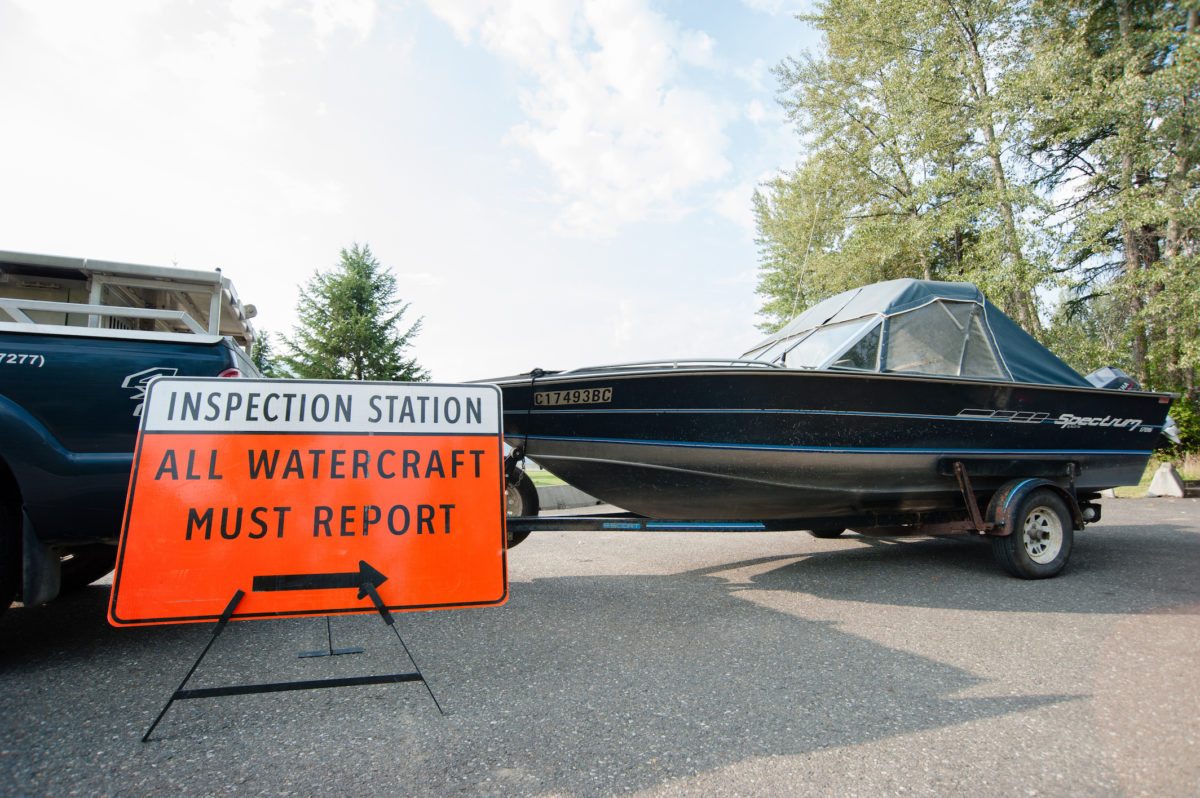
The following questions were answered by Laurie via the info on the Inter Ministry Invasive Species Working Group website.
Where do Zebra and Quagga mussels come from?
Zebra and Quagga mussels have been introduced by trans-continental shipping from the Baltic Sea to the Great Lakes. From there, they have spread throughout North America by attaching to watercraft hauled between waterbodies. These species can be moved between watersheds while attached as juvenile or adult mussels to watercraft that are transported between waterbodies. Zebra and quagga mussels can survive for extended periods of time out of the water and can be easily overlooked in the smaller juvenile stages when attached to a boat. Their microscopic free-swimming larvae can also survive for up to 30 days in standing water in boats or other equipment.
Why are they so bad?
The list is long:
- The economic impact of these invasive mussels to hydropower, agricultural irrigation, municipal water supplies and recreational boating has been estimated to be $43 million per year.
- Local extirpation of native mussel populations
- Filter water to the point where food sources such as plankton are removed.
- Impact fish and wildlife and drinking water by increasing toxic algal blooms.
- Increase costs associated with maintaining infrastructure related to power generation, sewage and water facilities.
- Affect recreational activities by cutting swimmers feet as a result of their sharp shells.
Invasive mussels were just detected in Montana. How do they travel?
Key pathways are recreational boats on trailers or any other watercraft or contaminated equipment fouled with zebra or quagga mussels, and moved across land. It would only take one boat carrying these invasive mussels to devastate B.C. waterbodies.
Has the BC mussel defence program been successful?
In 2015, BC launched a pilot watercraft inspection program. During the pilot season, over 4,300 watercraft were inspected and provincial inspectors interacted with approximately 10,000 people to promote Clean, Drain, Dry. The program continued in 2016 with five inspection stations along the B.C.-Alberta border, and three along the B.C.-United States border. In total, 32 auxiliary conservation officers operated the inspection stations seven days a week from April through October 2016. During 2016 over 24,100 watercraft were inspected at stations set up around BC. Of them 17 had invasive mussels onboard. On March 30th, 2017, the B.C. government announced new measures to address the threat of invasive mussels. The province is adding two new inspection stations, increasing inspection hours, and adding more staff including a mussel-sniffing dog to inspect watercraft as part of their Mussel Defense Program.
What happens when they’re discovered?
If boats are found with Zebra or Quagga mussels they are decontaminated, quarantined and re-inspected.
Do all boats and Sea-Doos have to stop at an inspection station? What happens if you don’t?
It is mandatory for all watercraft to stop at road-side inspection stations. Watercraft includes sailboats, motorboats, car toppers, kayaks, canoes, and paddleboards being transported in BC. Dedicated crews of inspectors check and if necessary decontaminate mussel infested boats. This approach has been taken by other jurisdictions in the Pacific Northwest, and proven to be highly effective in educating boaters on the risk of invasive mussel introduction. Failure to stop at an inspection station can result in hefty fines.
Yeah, or the destruction of an ecosystem.
Related Stories
Why Locals Ski Naked in Golden, BC
Every summer, indecently exposed to the sun’s sizzle and with winter’s last vestige all but shrivelled up, boarders…
Why You Tour Contest
This has nothing to do with our magazine, other than the fact that we're big fans of CMH (Hans Gmoser is a Kootenay…
STAND movie hits BC in early May
From our Friends Anthony Bonello of b4apres Media, and Nicolas Teichrob, photographer comes the cinematic premier of…
Creaking Tree String Quartet touring BC
Two time Juno nominees, The Creaking Tree String Quartet are coming to British Columbia to promote there fourth Album.…
Bullfrog Bully – The Fight Against An Invasive Amphibian
Sometimes, to save a species, you have to kill one. This is the story of an invasive American bullfrog, told from his…
Cool New Video by Nelson BC’s Best Western Hotel
The world of the webisode gets funner by the day. This new piece by the local Nelson family that runs the town's Best…



